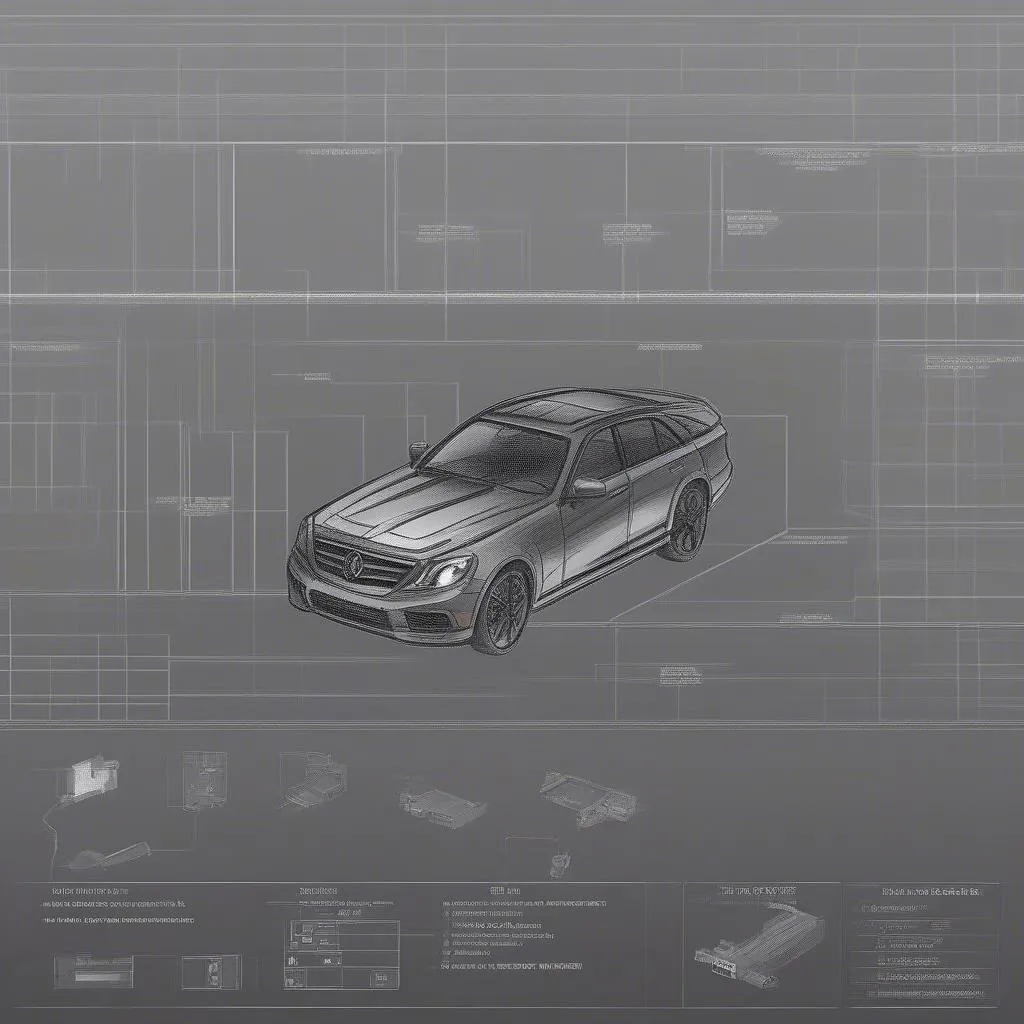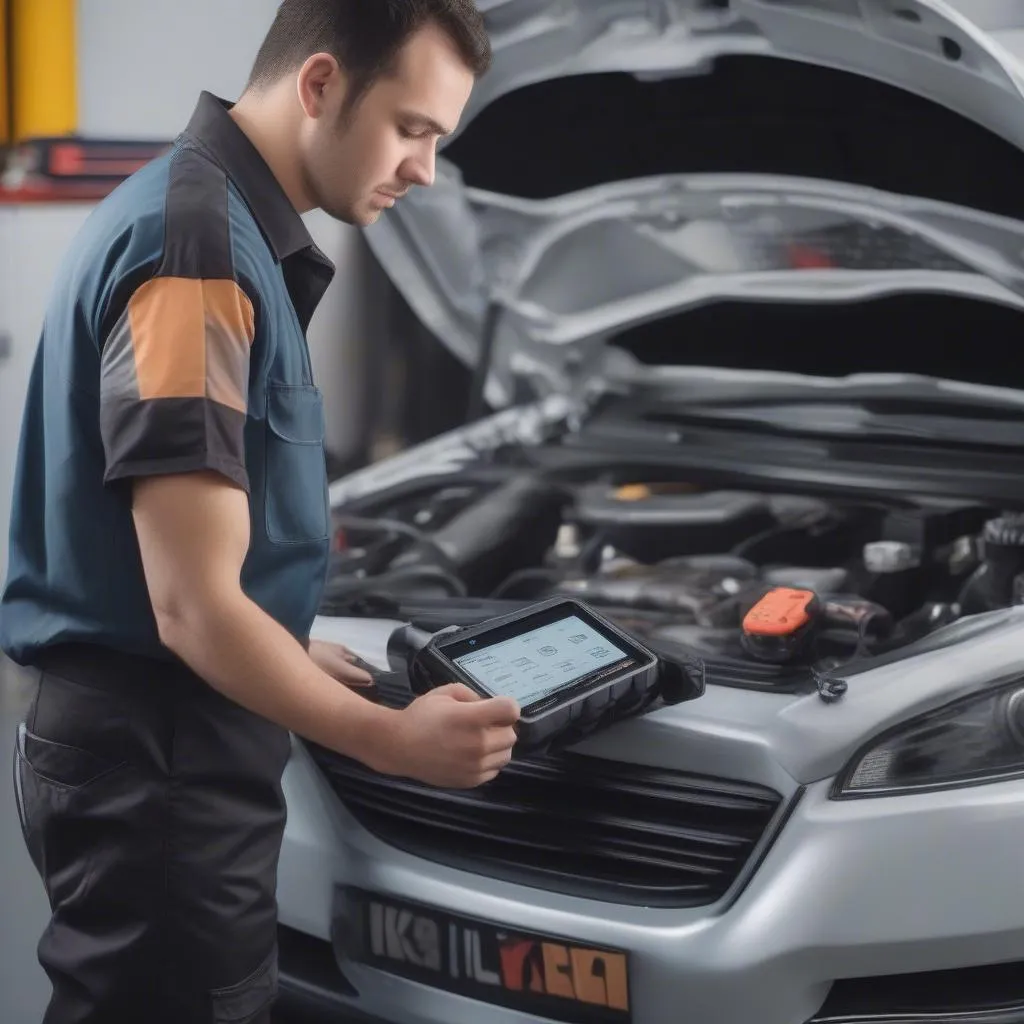Have you ever wondered how mechanics can diagnose problems in your car so quickly and efficiently? It’s all thanks to the K-line Obd protocol, a crucial element of modern car diagnostics. Imagine this: You’re driving down the road, and your car suddenly starts sputtering. You pull over, worried, and call your mechanic. They ask a few questions and say, “Bring it in, I think it’s a problem with the fuel injector.” How did they know that so quickly? This is where the K-Line OBD comes in!
What is K-line Obd?
The K-Line OBD is a communication protocol that allows a diagnostic tool to connect to a vehicle’s control unit (ECU) and retrieve data. This data can be used to diagnose problems, monitor performance, and even reprogram the ECU. Think of the K-Line OBD as the language that mechanics speak to your car to understand what’s going on under the hood.
K-line Obd Explained
The K-Line OBD is named after the “K” pin on the OBD-II connector, which is the physical interface used for communication. The K-Line OBD is a half-duplex protocol, meaning that data can only be sent in one direction at a time. However, it’s surprisingly efficient and effective, allowing mechanics to gain valuable insights into a car’s internal workings.
Why K-line Obd Matters
The K-Line OBD is essential for modern automotive diagnostics. It allows mechanics to:
- Identify and diagnose problems: From a misfiring engine to a malfunctioning sensor, the K-Line OBD helps locate the source of the problem.
- Monitor vehicle performance: Mechanics can track various performance parameters like fuel consumption, engine temperature, and speed, giving them a comprehensive picture of your car’s health.
- Reprogram the ECU: The K-Line OBD enables mechanics to reprogram the ECU, updating its software and even customizing certain vehicle settings.
Common K-line Obd Questions:
How do I use K-line Obd?
You’ll need a diagnostic tool compatible with the K-Line OBD protocol. These tools are typically used by mechanics and professionals, but some DIY enthusiasts might be interested in exploring this technology. However, we highly recommend seeking professional assistance for any complex diagnostics or repairs.
Which cars use K-line Obd?
The K-Line OBD protocol is commonly used in European cars, especially models manufactured before the widespread adoption of CAN bus technology. For example, vehicles from brands like BMW, Audi, Volkswagen, Mercedes-Benz, and Porsche often rely on the K-Line OBD.
What are the limitations of K-line Obd?
While K-Line OBD is powerful, it does have some limitations. It’s slower than other protocols like CAN bus, and it might not be compatible with all modern vehicles. Additionally, K-Line OBD is generally not used for complex diagnostics or repairs.
The Future of K-line Obd
The K-Line OBD protocol is still widely used today, particularly for older vehicles. However, its use is gradually declining as newer vehicles increasingly adopt more advanced protocols like CAN bus. However, this doesn’t mean the K-Line OBD is obsolete. It remains a valuable tool for understanding and diagnosing older vehicles.
 obd-ii connector
obd-ii connector
 obd2 scanner
obd2 scanner
Need Help with K-line Obd or Automotive Diagnostics?
If you’re experiencing car troubles and need help with diagnostics or repair, don’t hesitate to reach out to us. We offer a wide range of services for all your automotive needs, from basic maintenance to complex repairs. Our experienced technicians are ready to help you diagnose the problem and get your car back on the road quickly and efficiently.
Contact us at Whatsapp: +84767531508 for a free consultation and let us help you get your car back in shape!
Disclaimer: We strive to provide accurate and up-to-date information about K-Line OBD. However, automotive technology is constantly evolving, and information may become outdated. We recommend consulting with a qualified mechanic for specific advice and repairs.
If you enjoyed this article, be sure to check out our other articles about automotive diagnostics:
- K-Line OBD Protocol
- What is K-Line OBD?
- Dodge OBD Connector Pinout
- 2002 GMC Sonoma OBD-A and B Wire Colors
- BMW OBD Connector Pinout
Do you have any questions about K-Line OBD? Leave a comment below and we’ll be happy to help!